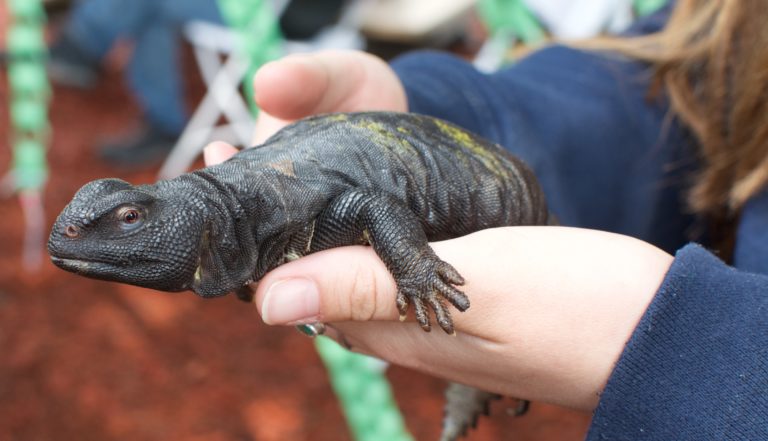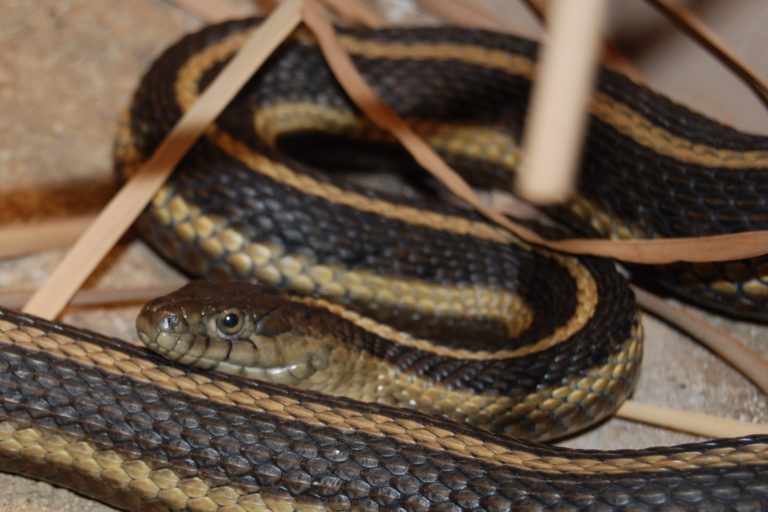What is Reptile and Amphibian Awareness Day at the Sacramento Zoo?
The Sacramento Zoo’s Reptile and Amphibian Awareness Day is an event hosted by the zoo and the Greater Sacramento chapter of the American Association of Zoo Keepers. This event educates the public about herps and encourages people to do their part to help conserve these wonderful creatures.
What reptiles reside at the Sacramento Zoo?
Because Backwater Reptiles is based out of Northern California, the Sacramento Zoo is just a short drive away from us. And wouldn’t you know it, the zoo has a really cool dedicated reptile house where lizards, frogs, snakes, turtles, tortoises, salamanders and even some invertebrates reside.
We could definitely visit the zoo any day of the week, given that it’s so close to us, but it certainly was refreshing to see our favorite critters get some of the spotlight. Not only was there plenty of opportunity to learn about herps at the reptile awareness booth, there were also lots of fun activities to get children involved and excited about our scaly friends.
Our favorite herps within the reptile house were probably the rhinoceros iguana and the prehensile tailed skinks. But the zoo also has a rattlesnake, Western pond turtles, a few crocodilians, tiger salamanders, White’s tree frogs, and ball pythons to name just a few.

Interview with Jasmine Rosario, a zoo keeper at the Sacramento Zoo and a member of the Greater Sacramento chapter of AAZK
Backwater Reptiles was lucky enough to get the opportunity to meet with Jasmine Rosario, a zoo keeper who works with herps and a member of the Greater Sacramento chapter of AAZK. Rosario discussed everything from her favorite herps to the work that the zoo does in order to help conserve reptile populations.
Keep reading to see what Rosario had to say.
Backwater Reptiles: Do you have any particular animal you work in? Do you specialize in reptiles?
Jasmine Rosario: I do work in the reptile department. I also work in the hoof stock which includes giraffes and wallabies and kangaroos too. I am currently being trained in the carnivore section which includes big cats and otters and other cool animals.
BR: How do you get into a job like yours?
Rosario: It is a very competitive field. There are only so many zoos and therefore only so many zookeepers. You have to have a four year animal science degree background and experience. The way that I started was going through their volunteer program as a keeper aide and then when positions opened up, they saw my potential and let me work in the lower ranking or beginning position which is commissary. In commissary you do diet prepping for all the animals in the zoo and from there they train you in other areas to help out. So that’s my beginning as a zoo keeper.
BR: Where did your personal interest in reptiles start?
Rosario: It actually started when I started working here. Bill Bennett, who is on the board of directors for NCHS got me into it. He took me under his wing and had me doing exhibit projects. He got me involved in NCHS and I ended up adopting three snakes. I have two ball pythons and a corn snake.
BR: What exactly do you do on a day to day basis to care for the animals here?
Rosario: It’s a lot of cleaning exhibits and making sure things are sanitary. There’s a lot of feeding and putting out enrichment to make sure your animals are entertained and kept busy. You have to keep a good eye on them and make sure they’re healthy. That means alerting a vet or vet tech if there are any problems that you notice.
BR: How do you do enrichment for a reptile?
Rosario: It’s pretty difficult. For dart frogs, we have the kid camp do little paper tubes. They cut holes in the tubes and we shove fruit flies in it so the flies burst out. We have sulcata tortoises and we’ll give them balls to roll around with dandelion greens sticking out. Sometimes they’ll get different diet items like pumpkins during the fall. Even just switching around their exhibit can be enrichment enough since they’re in a new environment.
BR: What do you think is the most challenging reptile or amphibian to care for?
Rosario: I think all the amphibians are the hardest. There’s a lot that goes into their care that people don’t think about. Water quality is a big one. You don’t want nitrates or nitrites or ammonia in their water, so you have to constantly test for that. We also won’t put them in tap water. They have a special reverse osmosis system, so they do need special water. Diet is another big factor. With reptiles and amphibians you have to make sure you’re providing a variety of items. UVB lighting is a big factor as well to prevent bone disease. You also have to make sure they get enough calcium and vitamins. It’s a balance.
BR: Do you have a favorite herp that you work with?
Rosario: They’re all pretty cool, but I think I like the common chuckwallas the best because they’re really cool. Our giant garter snake, Cleo, is also really cool. We’re the only institution that has a California giant garter snake. She was injured and brought to us.

BR: What is a reptile or amphibian that you wish the Sacramento Zoo could get?
Rosario: A lot of the keepers really want to get in some more crocodilians. A gharial would be cool, but we don’t really have space for that in our reptile house. Some giant snakes would be awesome too, like a reticulated python.
BR: You mentioned you’re involved with the Greater Sacramento chapter of the AAZK. What is the goal of that organization?
Rosario: The AAZK is basically a group that helps to advance zoo keepers in their career, but our chapter here is more of a conservation based effort. It’s welcoming to the public and we have a lot of docents and volunteers that join too, not just our staff and zoo keepers. Our focus is to raise money and do awareness events like this so that people get thinking about some of the animals that need our help out there in the wild. We do a lot of fund raising events too. Later in the year we’ll have a giraffe day and a primate day where we’ll be raising money for organizations that cover those animals. We’ve donated a lot of money to organizations that help out animals.
BR: Is the zoo currently involved in any conservation or breeding efforts?
Rosario: In the past we’ve been involved in the Western pond turtle project. It’s on hold right now because they are doing genetic testing because it turns out that our turtles are from different regions and they want to figure out what turtles are from where. That’s the biggest project we’re involved with as far as reptiles and amphibians are concerned.
BR: What do you think about keeping reptiles as pets?
Rosario: It depends. They’re pretty tough to take care of. You have to create the full environment for them. It’s cool to have them if they have proper husbandry and if they’re bred or not fit to be in the wild. I don’t agree with taking them out of the wild. I would recommend the ones that are most often bred in captivity – ball pythons, corn snakes, leopard geckos, etcetera – as pets. They’re almost domesticated because we breed them so much. Nothing exotic or endangered or crazy where they are plucked out of their environment.
BR: What can you tell me about the activities and events you have going on today for reptile and amphibian awareness day at the zoo?
Rosario: We have a few things at our station including a scavenger hunt that takes place in the reptile house. Kids find the animals in the proper exhibit and there’s a fact sheet where they learn things about the species and they get a t-shirt. We have paper snake chains that represent the lengths of the snakes full-grown in reality. We also have the frog jump where we have three species of frogs’ average jump length and kids can see how they compare to them. There are coloring activities and life cycle matching games. There’s also information on the characteristics of reptiles and amphibians and what makes them different since people always tend to link them together even though they’re totally separate groups. We also have some diet guessing games and some turtle chow guessing games with prizes.
BR: Do you feel that the awareness days at the zoo are successful?
Rosario: Yeah, as long as people are learning a little bit of something, then I think they’re successful.

Conclusion
Fans of reptiles and amphibians are already aware of how cool these creatures are. We love interacting with them, observing them, conserving them and teaching others about them. We don’t need a special day to show our appreciation for reptiles. But at Backwater Reptiles, we’re all about any event or activity that educates about why herps deserve our love and attention, which is why we’re grateful to have had the opportunity to attend Reptile and Amphibian Awareness Day at our local zoo.
We hope you enjoyed our interview with a local herp zoo keeper. It’s not every day that we get to talk to someone as educated and up to date on the proper husbandry and techniques needed to keep our favorite critters healthy. What questions would you have asked the zoo keeper?
